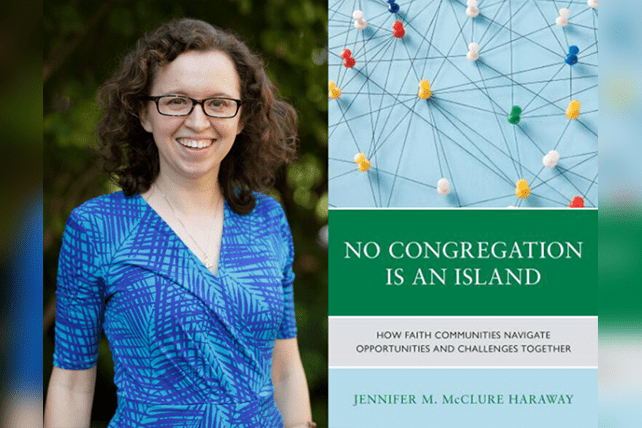“Sometimes I just want to talk with my mom’s Methodist pastor and see what they’re talking about, because I think they’re probably having a different conversation,” Haraway recalls him saying. “That would be helpful for me.”
The 438 congregations in the study include houses of worship from eight counties, all in the middle part of Alabama. Most are Christian, given Alabama’s place in the Bible belt, but the study did include mosques and synagogues. The congregations ranged from churches with a handful of members to megachurches.
Despite their differences, the congregations in the study often had a great deal in common. One chapter of the book compares the Churches of Christ, a group that uses no instruments in worship, with the Church of Jesus Christ of Latter-day Saints. The two groups are different from the outside: the Churches of Christ are fiercely independent and skeptical of any hierarchical structures, while the Latter-day Saints have a highly organized and interdependent structure with clear leaders at the top. Both have their own distinct theology.
Yet, both are so-called restorationist movements — founded by people trying to capture something essential about Christianity they believed was lost. Both have a clear sense of their mission and an identity tied to that mission.
“That makes them very tight-knit,” Haraway said.
One of the last chapters of the book deals with groups that cooperate across racial lines. Almost half the groups Haraway studied had no ties to congregations that had a different racial makeup. That did not surprise her, given the country’s continuing racial divides and the way churches often closely associate with other congregations from their own denominations — and those denominations are divided racially.
Pastors from different predominantly white groups are much more likely to have full-time roles, while many Black and Hispanic pastors are bi-vocational, having a day job alongside their ministry. That can make difficult even something as simple as setting a time for pastors from different backgrounds to meet.
The book offers no easy solutions but does offer some advice from congregations that have been able to work together in diverse settings.
“To build healthy partnerships across race, know that it takes time to develop trust,” she advises. “Be patient and be willing to do what it takes.”
Haraway said congregations get three different kinds of help from each other: emotional support, informational support and what she called “instrumental” support. Sometimes they need ideas or a partner who can collaborate on projects. And sometimes a bit of emotional support — especially for pastors — is crucial, she said.
“One of the ministers I talked with said that he was recently talking with another local pastor who said, ‘You know, some days I just want to quit,’” she said. “And that other pastor said, ‘Me too. Let’s go get lunch.’”
This article originally appeared here.

